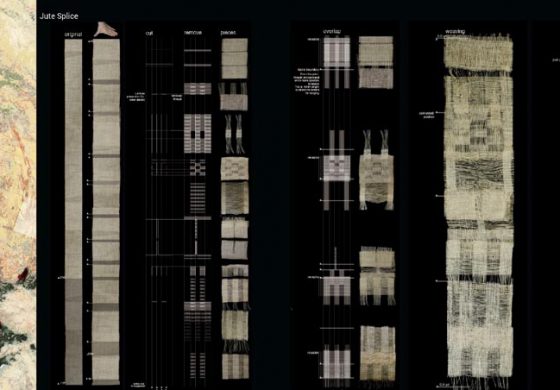The Urban Imaginary
The word urban is generally taken to mean “of, pertaining to, or comprising a city.” But it has increasingly come to refer to that which distinguishes the city in the absence of the walls that once presented it as something set apart from its surroundings, something that claimed to be different and defensible. In this capacity the urban is an idea by which people articulate and distinguish a city in the manner that walls once did, viz., as a clear and distinct entity that occupies and exhausts a portion of the earth surface. It gives the city a limit, an inside and an outside. It is the urban and not necessarily walls that allows José Ortega y Gasset to define the city as “an enclosed, finite space over against amorphous, limitless space. . . . [I]t is purely and simply the negation of the fields. . . . This lesser, rebellious field, which secedes from the limitless one, and keeps to itself, is a space sui generis, of the most novel kind, in which man frees himself from the community of the plant and the animal, leaves them outside, and creates an enclosure apart which is purely human, a civil space.”[1] It is the urban at work when Lewis Mumford describes the city as a work of art where “ritual passes on occasion into the active drama of a fully differentiated and self-conscious society.” It is again the urban that permits planner and historian Peter Hall to deploy an even stronger metaphor of containment to describe the city: “a unique crucible of creativity.”[2] And it is what facilitates historian Oswald Spengler to see the city as the equivalent of a house. “What his house is to the peasant,” he writes, “the city is to civilized man. As the house has its household gods, so has the city its protecting deity, its local saint.”[3]
With the idea of the urban replacing walls, the limits of the city are a matter of assertion and agreement and their presence on the ground, a professional enterprise in the hands of planners and administrators. To the majority of them these limits are in an applied statistic, such as density, land use, literacy level, economy, or infrastructure. Others see them (additionally perhaps) in a trajectory of growth from a historic origin (often walled). And yet others see it as a way of life. The city, writes Robert Park of the ‘Chicago School’ of urban sociology, is “a state of mind, a body of customs and tradition, and of the organized attitudes and sentiments that inhere in these customs and are transmitted with this tradition.”[4] His colleague, author of the influential “Urbanism as a Way of Life,” defines the city as “a relatively large, dense, and permanent settlement of socially heterogeneous individuals.”[5] Today, the competing definitions of the city will fill a book. But whatever it is asserted to be, it is intended to clarify an edge of difference, enabling designers, historians, and an array of social scientists and activists to distinguish the city from a non-city or a lesser-than-city such as suburbia, exurbia, urban sprawl, country, rural, wilderness, and nature. This way the idea of the urban has literally replaced the walled city with the urban city, an entity that expectedly is often clearer in the mind’s eye, maps and descriptions than it is on the ground.
The 20th century was given to the urban city. It began with the influential Garden City movement that advocated and implemented cities of an arguable size, density, economy and amenities surrounded by greenbelts of ‘country’ across the world, including India.[6] Its bid to plan cities grew in competition with the metropolitan movement which advocated large centered cities in a field of smaller ones. But even as the urban imaginary fueled the profession of planning, it also anchored itself in the humanities, becoming a fertile ground of critique, particularly among dialectical thinkers who argued the problematic nature of an edge constituted by a difference asserted by the city. It raises concerns for what lies ‘outside’ as set up with a disadvantage – country, nature, wilderness.[7] To an extent Gandhi, whose time in England coincided with the Garden City movement, located India’s freedom movement outside the urban city. To him, it was a center of British colonial power, leading him to promote a village culture in opposition to it. “We are inheritors of a rural civilization,” he writes of India. “To uproot it and substitute for it an urban civilization seems to me an impossibility. . . [W]e must perpetuate the present rural civilization and endeavour to rid it of its acknowledged defects.”[8]
Dialectical thinkers are also concerned for an edge within the city constituted by a difference asserted by those who control capital. Here, what lies on the other side are immigrants, transients, and others of a labor class, their disadvantage visible in slums, ghettoes, shanty towns, social housing, red-lined areas, and various injustices. The call is to give these people a voice in constituting ‘urban space’ and access to what Henri Lefebvre famously called ‘the right to the city’. He poignantly clarifies this as access not to a traditional city that is a “consummate reality” but to “a transformed and renewed right to urban life.”[9] David Harvey, revisiting this right recently, describes it as “far more than the individual liberty to access urban resources: it is a right to change ourselves by changing the city. It is, moreover, a common rather than an individual right since this transformation inevitably depends upon the exercise of a collective power to reshape the processes of urbanization.”[10]
In the last couple of decades, though, the idea of the urban has been challenged by global flows of capital, labor, materials, technology and information. They see flows blurring limits in sightings of a “non-place urban realm,” an “urban field,” a “global city,” a “space of flows,” and a “planetary city.” Some fear this is the spread of the urban city consuming the non-city. Others see the emergence of new kind of urban city facilitated by technologies that allow it to extend and contract in non-contiguous ways for varying moments of time.[11] They seek ‘mapping techniques’ and modes of representation that present it in terms other than those of a geographic territory.[12] But a more significant impact of this nebulousness is a resignation to the urban with designers and social scientists moving away from a concern with the urban city to projects, areas and movements that they call urban. In the words of architect Rem Koolhaas, “‘The’ city no longer exists.” “What if we simply redefine our relationship with the city not as its makers but as its mere subjects, as its supporters? More than ever, the city is all we have.”[13]
Yet, however nebulous some formulations of the urban may make the city out to be, it has not lost its birthright, viz., its claim to difference with a non-city. In India, this difference draws the migrant. They come to the city from an ‘outside’ that is the realm of the village where Gandhi anchored the ‘rural civilization’ which he positioned against the urban civilization of a colonial regime. Like the maidan, the village of his time had an appropriative quality, extending and contracting with practices modulated by various conditions, in particular rain and rain-holdings in a world of the monsoons, but also reaching into forests, deserts and mountains which in India are not wildernesses as they may be elsewhere but places inhabited or foraged. But again, like the maidan which is set up as informal in opposition to the formalities of the city, the village is relegated to a rural in opposition to the urban of the city. Limits today distinguish the village from the city on one side and from ‘nature reserves’ on the other toward making a surface of exclusive and exclusionary territorial things that add up to a nation with an edge to the sea and other nations.
This surface may be seen to be a consequence of ‘urban interference’ in a world where the city calls the difference with its surroundings; but it may also be seen to be the consequence of a taken-for-granted image that people inhabit the earth by settling. Here, the route taken by the rural migrant is from a lesser settlement to a greater one, the city being the quintessential settlement
The Settling Imagery
Settling is not necessarily what people do when they inhabit the earth; it is what they are imaged to do. However, it is eventually what they believe they do and are encouraged to do in various ways by education, policy and markets that value the firm settlements of the sedentary above the temporary ones of nomads. It is conceivable that the act of inhabiting could be imaged in other ways such as anchoring, splicing, weaving or something else; but settling has gripped the imagination and it is settlements that feature in the design of infrastructure, representations of place, formulations of the past and visions of the future. Significantly, however, it is a particular image of settling that grips the imagination. Settling could be visualized as putting down roots, coming to rest, or arriving at an agreement, all of which are ways that dictionaries present the word; but the link between cities and rivers popularly made by urban historians who say that the earliest cities emerged on riverbanks, suggests that the more likely image conjured by the word settling is a river depositing alluvium to make ‘land’.
Among the earliest to invoke this material image of settling and perhaps the very idea that humans settle is Herodotus in the 5th century BCE. The image came to this ‘father of history’ from observing water perform in a particular way on the earth surface, particularly the water called the Nile. The people in Egypt saw this water from rains far to the south rise each year following the summer solstice and fall around the autumn equinox. When it rose they led it into fields and reservoirs up to a distance of as much “two days’ journey” and at times even further into the desert on either side of the fertile strip that was considered to be Egypt.[14] To Herodotus, following Greek academics of the Milesian School who initiated the study of the earth surface and invented the world map to represent it, the Nile was not simply water; it was a river: a flow of water confined to a channel by banks. In his view, which was from above looking down at the earth surface in plan, the Nile did not rise and fall as much as violated its confinement. It was ‘abnormal’ behavior that needed explanation, something that was obviously not be forthcoming from the Egyptians given that they did not necessarily see a river in the first place.
Herodotus ventured an explanation for the Nile’s deviant behavior; but he is more remembered for his observation of the consequences of these violations, viz., the land-building that they facilitated. They made land by depositing the soil brought down by the waters of the river from higher ground when these waters crossed the limits of the river’s channel. Egypt, he wrote, is the gift of the river. It is an observation that today is learnt as fact, one that is applied to waters in other places. Records suggest that a century after Herodotus, Alexander III of Macedon and his men were applying his observations of the Nile to the waters known as Indus, confining them to a river in order to explain an India gifted by it.
To Herodotus, however, the gift of the river was not just land. It was settled ground. In the case of Egypt this ground was in contrast to the unsettled grounds all around: the shifting sands of the deserts, the erosive surface of high grounds and the restless surface of the sea. By settling ground, Herodotus writes, “the river gave its riches to the earth and the earth to the people.”[15] The distinguishing quality of this ground was that it held a line marked on it with a degree of clarity, certainty, and permanence, something that could not be said about the grounds around, which by this measure were anarchic. It made them home to what was clearly to him less fortunate people who were unsettled because the ground they inhabited was unsettled and more suited to “wild beasts.”
It was a small step from the appreciation of settled ground for Herodotus to appreciate the more settled ground of mounds that the Egyptians raised in a flat alluvial plain for their ‘cities’, mounds that became “like the islands in the Aegean” when the waters of the Nile violated the banks of a river.[16] They held a line with even greater certainty the plains below.
Essential to Herodotus’ appreciation of settled ground was the geographic line – a line drawn on the earth surface with the intention of being viewed from above and drawn on a map. This line sets what is on either side of it apart: land from water, city from country, one property from another. The clarity that this line affords minimizes dispute or rather allows for ‘civil disagreement’, a feature that a number of scholars use alongside literacy, innovation, diversity, and economic opportunity to define the city as a place of civilization, more refined than those of villagers and nomads or in the language of some archeologists ‘Paleolithic savages’ and ‘Neolithic farmers’ from whose settlements or lack of settlement they say the city emerged in the course of civilization.[17] To this end, maps, which represent geographic lines in the view of the earth surface from above – have proved indispensable to the city. They show lines oftentimes with more clarity than they are on the ground; and with the advent of trigonometrical surveying in the 18th century they are at times the only place where geographic lines are negotiable, these lines being held to astronomical coordinates of the map rather than any material conditions on the earth surface.





